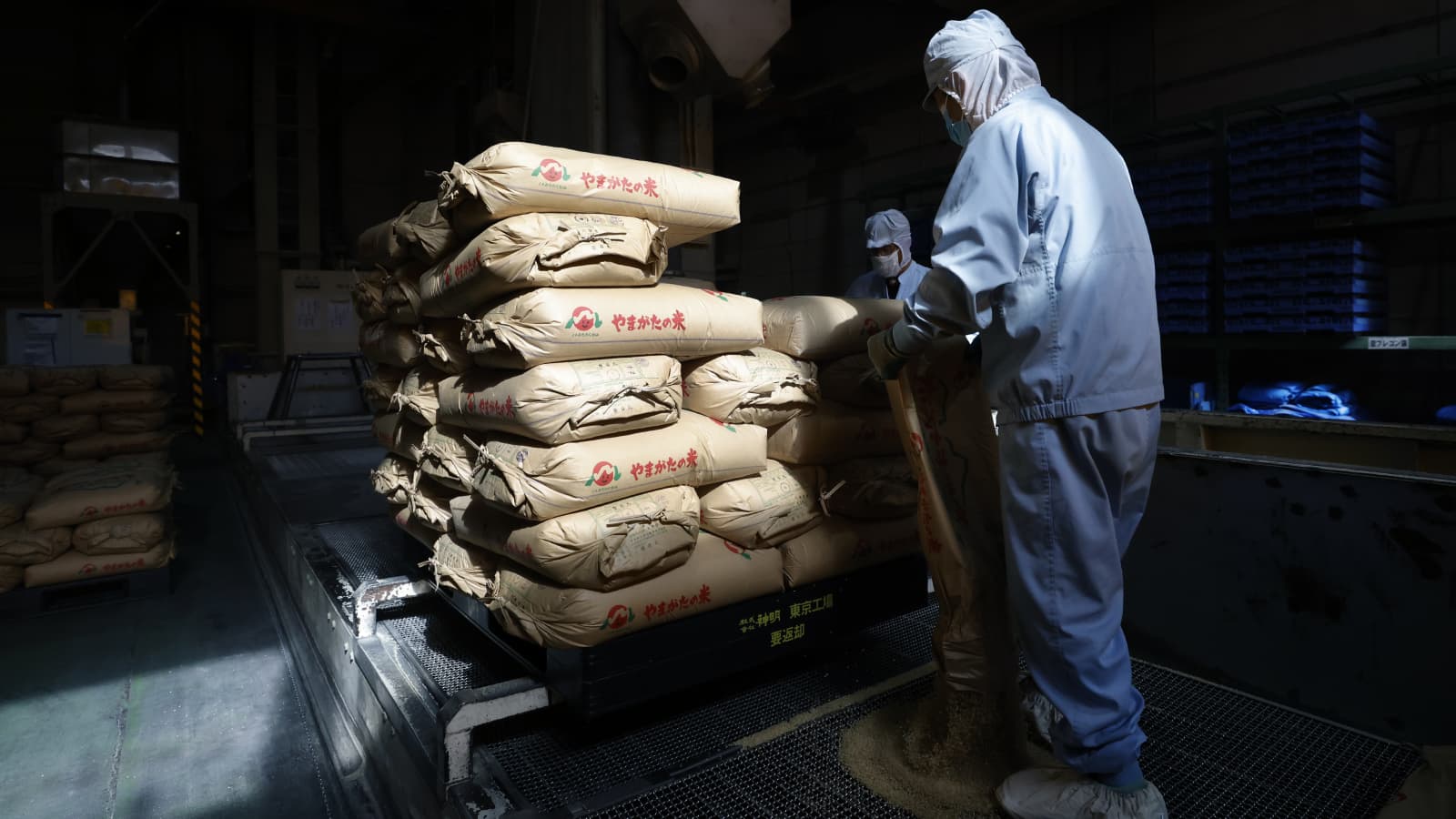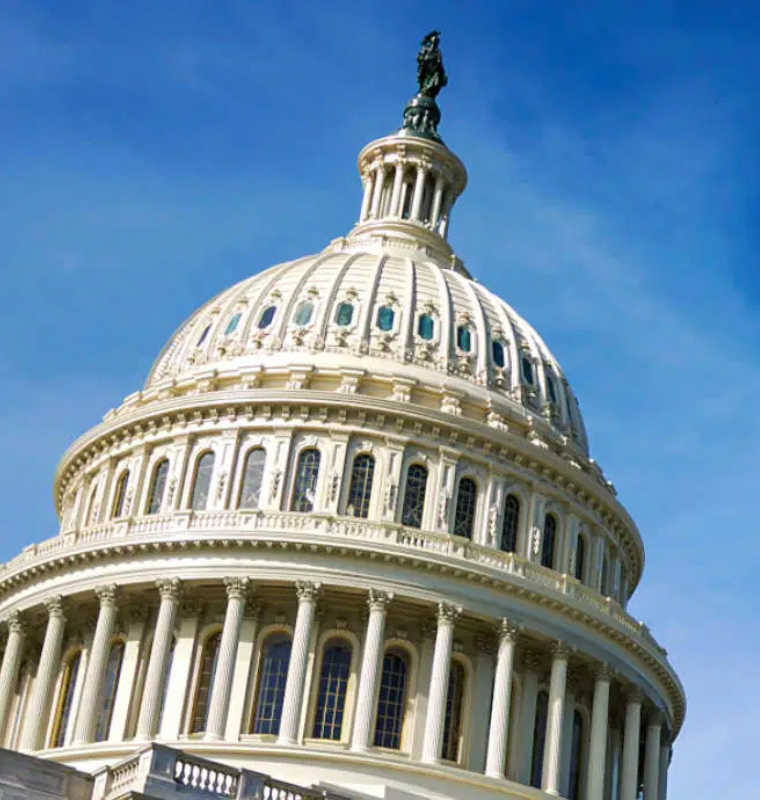Japan’s Rice Prices Soar Over 100% in May as Core Inflation Hits Highest Level Since Early 2023
Japan’s Rice Prices Soar Over 100% in May as Core Inflation Hits Highest Level Since Early 2023
By
Junia Wells
Last updated:
June 20, 2025
First Published:
August 6, 2025

A worker handles sacks of brown rice at a Shinmei Co. plant in Kawaguchi, Saitama Prefecture, Japan, on Tuesday, Sept. 24, 2024. Bags of rice are expected to start filling the shelves of Japan’s supermarkets again soon as farmers harvest their new crop, though the increase in supply will do little to tame higher prices. Photographer: Kiyoshi Ota/Bloomberg via Getty Images | Bloomberg | Bloomberg | Getty Images
Historic Rice Price Surge Deepens Japan’s Inflation Woes
Japan’s inflationary pressures intensified in May, as rice prices skyrocketed by 101.7% year-over-year, marking the largest increase in over 50 years. This dramatic surge follows already elevated gains of 98.4% in April and 92.1% in March, signaling sustained upward momentum in the nation’s most critical food staple.
In response to the steep climb, Japanese authorities have begun releasing emergency rice stockpiles to curb further price hikes and protect household budgets.
Core Inflation Remains Stubbornly High
Japan’s core inflation rate, which excludes fresh food prices but includes energy, rose to 3.7% in May, its highest level since January 2023, according to data released Friday by the Statistics Bureau. This reading slightly exceeded market expectations of 3.6%, reflecting ongoing price pressures across key consumer categories.
Meanwhile, headline inflation came in at 3.5%, a slight dip from April’s 3.6%, but still far above the Bank of Japan’s (BOJ) 2% target — a threshold inflation has exceeded for 38 consecutive months.
The “core-core” inflation measure, which excludes both fresh food and energy and is closely monitored by BOJ policymakers as a gauge of underlying inflation trends, climbed to 3.3% from 3% in April. This steady acceleration underscores the broad-based nature of Japan’s inflation problem.
Rice Prices Account for Nearly Half of Inflation Spike
Marcella Chow, Global Market Strategist at JP Morgan Asset Management, emphasized the outsized role of rice in Japan’s inflation dynamics. “Rice accounts for approximately 50% of core inflation,” she told CNBC. “Future inflation trends will heavily depend on whether food prices, particularly rice, stabilize or continue rising.”
Chow added that government intervention aimed at lowering rice prices could have broader benefits. “If these reductions extend to processed foods containing rice and lead to lower restaurant prices, they may ultimately stimulate household spending across the broader economy.”
Market Expectations and Central Bank’s Cautious Outlook
Despite persistent inflation, the Bank of Japan chose to hold its benchmark interest rate at 0.5% during its recent policy meeting. BOJ Governor Kazuo Ueda reiterated that any further rate hikes would depend on gaining greater confidence that underlying inflation can consistently hover near the 2% target.
“We will continue raising rates once we have more conviction that underlying inflation will approach or remain near 2%,” Ueda told Japan’s parliament last week.
In its policy statement, the BOJ acknowledged that firms continue to pass on higher wages into consumer prices, keeping core inflation elevated. However, it also forecasted that inflationary pressures may begin to subside, noting that "underlying CPI inflation is likely to be sluggish, mainly due to a deceleration in the economy."
Kei Okamura, portfolio manager at Neuberger Berman, struck a cautiously optimistic tone. “We expect food price pressures to ease over the coming months,” he said on CNBC’s Squawk Box Asia, while also warning that rising geopolitical tensions in the Middle East could impact global energy prices and feed back into inflation risks.
Japan’s Economy Contracts, Adding Complexity to Policy Decisions
The inflation data comes amid signs of broader economic weakness. Japan’s GDP shrank by 0.2% in the first quarter of 2025 compared to the previous quarter, marking the country’s first quarterly contraction in a year. Weaker exports were a major contributor to the decline, raising concerns about Japan’s fragile recovery.
Global investors and BOJ policymakers now face a complex landscape: inflation remains sticky primarily due to food costs, while growth momentum weakens and external risks — including volatile energy markets and uncertain global demand — persist.
Broader Global Context: Japan's Unique Inflation Challenge
Unlike many advanced economies where inflation surged primarily due to pandemic-era stimulus and supply chain disruptions, Japan’s recent price pressures have been more narrowly driven by food and import costs, particularly as the yen continues to struggle against the dollar.
The yen’s depreciation — down more than 9% against the U.S. dollar in 2025 — has further increased the cost of imported food and energy, compounding domestic inflationary pressures. As of Friday, the yen traded near 160 per dollar, one of its weakest levels since the late 1990s.
Japan’s struggle with rising food prices reflects a broader global trend as extreme weather events, disrupted supply chains, and geopolitical tensions continue to reshape food markets. Severe droughts in Southeast Asia have slashed rice production, adding to global supply constraints that have pushed international rice prices to their highest levels since 2008, according to data from the Food and Agriculture Organization (FAO).
Outlook: Inflation Relief May Be Elusive
Looking ahead, most economists expect Japan’s inflation to remain above target for at least the next several quarters, even as food price growth moderates. Sluggish domestic consumption, an aging population, and fragile export demand are likely to keep Japan’s overall growth trajectory tepid.
For now, Japan’s policymakers remain caught between battling stubborn inflation and avoiding tightening too aggressively, which could stall an already fragile recovery.
Popular articles
Subscribe to unlock premium content
Disney’s Timeless Magic and How the Entertainment Giant Continues to Shape Culture and Innovation

Imran Khan’s Economic Missteps Amid Political Chaos in Pakistan

The Philippines’ Digital Shift How Remittances and BPO Are Fueling Growth

Disney’s Timeless Magic and How the Entertainment Giant Continues to Shape Culture and Innovation

Imran Khan’s Economic Missteps Amid Political Chaos in Pakistan

Disney’s Timeless Magic and How the Entertainment Giant Continues to Shape Culture and Innovation









